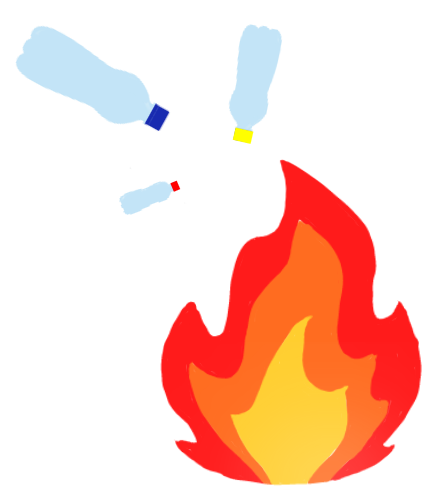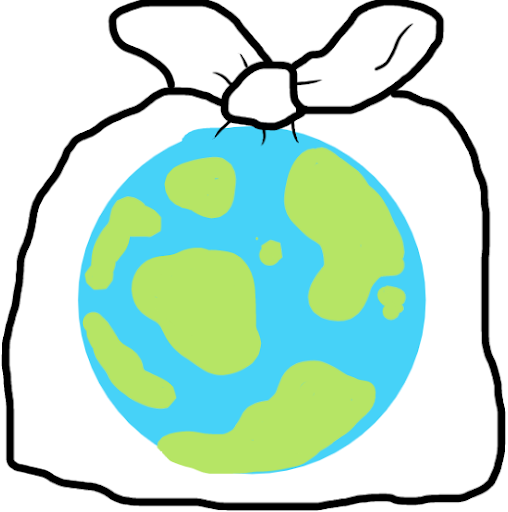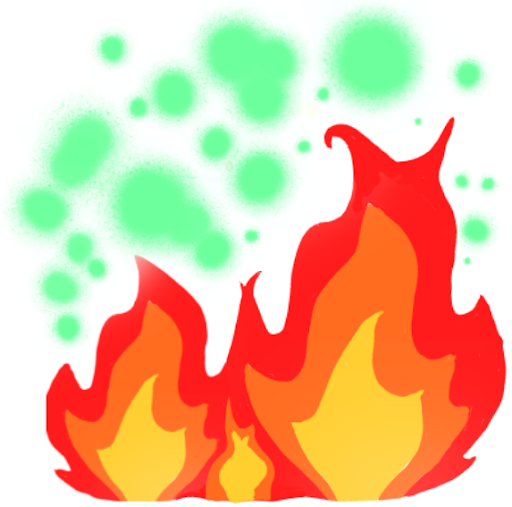Te Maunga Young Reporters
Plastics - A Class Investigation By Te Maunga.
Recently Te Maunga participated in a photojournalism course which prepared them to enter an international competition concerned with the proliferation of plastics. Enjoy seeing what they found out.
We hope our arguments reached you. When you want to change the world, the best place to start is yourself.
Te Maunga 2021
What Are The Consequences Of Burning Plastics
Rubbish dumps all over the world right now have to find a way to dispose of plastic. Some rubbish dumps set their plastic on fire, this is called burning plastic. Burning plastic is not good for many reasons.
As you can probably guess, burning plastic is very bad for the environment. When plastic is burnt, toxic gases like dioxins, furans, mercury and polychlorinated biphenyls are released into the atmosphere. When all of these gasses are released into the air it can badly affect a lot of things due to their poisonous nature. Having these unpleasant gasses in the atmosphere greatly contributes to global warming. It also threatens future life and vegetation.
As everyone knows we all breathe this air. There are horrible gases in the air, which means that you could end up breathing them in. If inhaled, the consequences of breathing in these gases include an increased risk of asthma and emphysema. It can increase the risk of heart disease, cause rashes, nausea, and headaches. In severe cases it damages the nervous system, and can possibly harm the kidneys or liver, it can also harm the reproductive and development systems of both humans and animals.
There is always a solution, and for this particular issue, there is more than one.
If there is less plastic, then there is less need for disposal. So, it all comes down to reducing plastic waste. I'm not telling you that you have to stop using plastic entirely, but it could just come down to buying the big pack of crisps instead of all the little packets, or maybe it could be that you use a reusable bag when you go shopping. It's better to do something rather than nothing.
Of course your plastic may not be being burned but it could be disposed of in a non environmentally friendly way with different consequences. So think to yourself, where is your plastic going?
Illustrations done by me on sketch pad
Chloe Blades, Year 8
I got all of my research from
www.unep.org/news-and-stories/story/plastic-bag-bans-can-help-reduce-toxic-fumes
Keep NZ Beautiful
What Is The Issue?
The issue is, the fact that we use too much plastic in the packaging of our food. This packaging is surrounding our Waikainga (home) and threatening to engulf Aotearoa. Our oceans, around schools, and even in the streets where we live. The population of our country is using Single Use Plastic as an everyday habit. It has taken less than 100 years for plastics to become foundational to nearly every aspect of our modern life in New Zealand. Plastic pollution can harm animals and can be a potential risk for human health and well being. NZ statistics show high use of everyday plastic. We have relied on other countries to process the majority of our plastic recycling. However, these countries no longer accept our plastic waste and we are being forced to rethink how we deal with it.
How Could We Decrease Packaging Use?
By changing how we use plastics we could dispose of all the waste and start to turn the problem around. Strategies have been thought that we could include reducing, reusing and recycling the plastics that we use. Tips for Reducing Packaging:
Carry your own reusable bag, water bottle, coffee cup, straw and utensils.
Buy loose products e.g vegetables that are not packaged in plastic.
When buying similar items but from different brands, buy the one with less plastic.
Further on through the year we have produced more different strategies on how to decrease packaging plastic and have gained progress within them.
School Issues And Solutions
Packaging waste pollutes our air, water, and soil. The average secondary school produces 22 kg of waste per pupil each academic year. For primary schools it is even higher at 45 kg per pupil. Most of the waste by weight comes from just two categories:
Paper and cardboard
Food waste
It’s not only classrooms that produce waste. It includes all indoor and outdoor areas of the school (e.g offices, staff room, canteen and playground)
Solutions for schools to stop use packaging waste:
Bring your packet of snacks in a reusable bag.
Start using reusable drink bottles - NO plastics.
Try to not buy a plastic lunchbox.
We can make Aotearoa beautiful. Keep avoiding the use of plastic as much as you can. Only together we can make Panoni happen.
Sources
Plastics - in - the - Environment .
Smartsolve.com .
stuff.co.nz
Marimatina Peni, Year 8
Choose Plants Not Plastic
Good side, Bad side
Plastic is a very common packaging material, but now some plant based products have entered the market. Companies like Ecoware and Noissue provide eco-friendly packaging solutions to business owners. Plant packaging increasingly becomes more popular as years go by. Many business owners have switched to plants in the past few years, gaining popularity.
Glenys Crosbie, Year 8
Everyone Can Make A Change
I chose to take this photo because I think the quote ‘Everyone can make a change’ is very powerful. You don’t have to be an adult to change the world, it doesn't matter who you are or what you do or where you live. You can make a change! You can be a boy or a girl, it doesn't matter! We are all humans and we can save the earth if we all do it!
Nina Atkinson Milin, Year 7
How Much Rubbish Goes Into Our Local Harbour and Beaches?
What Can I Do To Make A Change?
What dangerous waste has recently been discovered in the Hutt River?
In July, 2021, there were warnings around the Hutt River about nearby dead possums, poisoned by a now popular pesticide which goes by the name ‘1080’. Dog owners have been told not to take their dogs around the river anymore, due to the possums, which the dogs will most likely sniff or lick, as dogs do, or maybe even bite. We really do not want our dogs to be poisoned and possibly end up dying, because of 1080. Although, on the 17th of July, there was some really heavy rainfall, which washed away most of the possum carcasses. `We urge dog owners to avoid all eastern harbour beaches from Petone to Pencarrow, and the Hutt riverbed. Anyone walking their dog near the harbour beaches and the Hutt riverbed should keep their animals close on a lead and not allow them to scavenge, until warning signs have been taken down.’ - GREATER WELLINGTON REGIONAL COUNCIL
Students find Wellington Harbour flooded with rubbish
On September 22nd, 2016, three year 7 and 8 students at Wilford School in Wellington, had been studying our storm water drains, and how plastic waste is entering, and has entered them, and going through to Wellington harbour. With plenty of help from Auckland’s firm based Stormwater360 New Zealand system, the students were able to install two new water filters, on some drains in Petone. The students and their teacher, Alisa Webb, unfortunately found a huge amount of rubbish in the drains, including: Recycling bins, plastic bottles, a bikini top, and cigarette buds. Lots of cigarette buds!
What will I do to make a change in Seatoun?
The problem is that plastic waste and other unnecessary things are going into the drains and eventually into our oceans. If I’m going to help out with stopping this from continuously happening, then I’ll start in a spot which is close to me, Seatoun. Especially since Seatoun Beach is quite popular and will probably have a fair amount of rubbish. I will be picking up any rubbish that I find, if I find any, and I will also be looking at bins around the area to see if they are secure enough so that rubbish can’t fly out of them, due to strong wind or any other possible causes. Thus, showing action of my chosen United Nations Sustainable Development Goals, numbers 13 and 14: Climate Action, and Life Below Water.
Exploring Seatoun Beach
At Seatoun Beach I found that most of the rubbish was mainly just glass and plastic. Most of the glass was closer to the water, as for most of the plastic was closer to the shore! I think that the waste might be coming onto the beach because of one reason, littering! Although, it is possible that the glass was washed up onto the beach. Although,as for the plastic, this was most likely caused by the people of Seatoun. Also, most of the plastic that I found was the plastic from the straws of schools’ milk cartons! I wonder why?..
So, how much rubbish is there on, and in, our beaches?
In all seriousness, the numbers will just keep on changing, so we will honestly never know the exact true amount of waste in our waters. Even so, say if you googled this question, then yes, maybe you might find yourself an answer, but really, there is always going to be some little amounts of waste that we just don’t know about, or don’t count because they are so small.
Also, back to the amount of plastic numbers changing. The more we litter, the harder it is to get rid of it all. But, if we want to execute all of the waste from harming our sea creatures, and maybe even some land animals, then we all have to try harder! Because at the rate we are at right now, what we are doing is clearly not enough. So if you want to swim freely in a waste free ocean, or take your animal friend on a free adventure, then you need to work harder. We can’t just let others solve our problems for us. Even if it wasn’t our fault, or if you weren’t the one who ‘dropped that piece of rubbish’. It is still yours and everyone else’s duty, to care for our earth. Take this problem seriously, because it is, and it needs as much attention as it can get. Thank you.
By Mia Adams, Year 8.
Where I got information from:
Rubbish In The Hutt River ,
Plastic rubbish and items are found in the most unexpected places. Walking through the bush of Centennial Reserve, Miramar, I looked through the native trees and saw a bright red object that was out of place. Somehow a peg made its way onto a branch and there it could stay for 500 years until it would have degraded. I decided to collect the peg and rehome it on my washing line. I’m saying that we should reuse, rehome and recycle to make New Zealand a better place.
By Billy Proudfoot, Year 8
Recycle your Electronic Waste
Solution: Every year, New Zealand produces 80,000 tonnes of electronic waste, which is quite a bit of plastic. That plastic is very harmful to the environment and to the earth. E-waste is the fastest growing waste on the planet, with an annual growth rate of 3–4%. It is estimated that e-waste generation will reach 52.2 million tonnes per annum by 2021. Many countries haven't developed sophisticated, large-scale programmes for reusing and recycling old electronic products, or e-waste. That includes New Zealand. The average New Zealander produces more than 20 kilograms of e-waste every year. However, e-waste can be turned into e-scrap by recycling it, and promisingly, New Zealand has a small but growing e-scrap processing industry. The best thing you can do to reduce e-waste is to resist buying a new device until you really need it. Try to get your old product repaired if possible and if it can’t be fixed, resell or recycle it responsibly. Before you recycle your device, seal up any broken parts in separate containers so that hazardous chemicals don’t leak. Wear latex gloves and a mask if you’re handling something that’s broken.
Tommaso Esposito, Year 8
- Sources: Rnz.co.nz . Recycle.co.nz . Ewaste1.com
Dropped
This photo shows how the use of glass dropped and how plastic use skyrocketed. There are lots of ways plastic is better than glass, but being ecological is not really one of them. There are pros and cons of plastic. One pro is how plastic is lighter and cheaper than glass, and the fact that it’s thinner and lighter, helps reduce costs of transport by taking less trips which lowers carbon emissions. Although, there are still cons: like how most of it is single use and can take a thousand years to decompose. We need plastic but not the waste that it creates.
I got this information from the sustainability times.
Adam Burns, Year 8
Which plastics are safe for us? Are they recyclable?
What plastics are good for our environment?
There are three types of plastic that are considered as safer options. Among the others are: Polyethylene Terephthalate, Polyethylene terephthalate, High-Density Polyethylene, two high density polyethylene and Polypropylene.
Safe plastic numbers to use...2,5,4. The outcome of littering. It will continue to worsen if we don’t change our habits. Solution...Minimize the use of plastics that we use and try to make a plastic that is not harmful to the environment and to life. One day we will find a proper solution, but until then we should start minimizing plastic. How can we do this?
Peyton Paese,Yr8
Below are some videos our Te Maunga young journalists have created. Enjoy!
My video is a campaign video, which means it will show people what’s best for our Earth. Let’s make a change!
Sophia Meech, Year 8
Nadia Monahan & Dannielle Trangmar, Year 7 & 8
By Petra Bouras, Year 8
By Shaun Pink, Year 7
Zoe Bouras, Year 7
Estelle Georgiou, Year 7
Lupita Hsieh and Jessica Ly, Year 7 & 8
James Pink, Year 8












